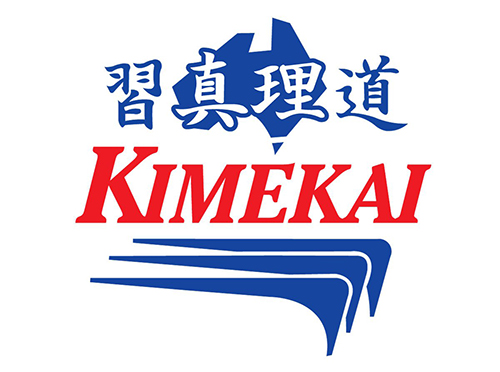Blood Rule and Bodily Fluids Policy
The aim of this policy is to decrease the exposure risk to blood-borne and body fluid pathogens (1) whilst at training/competing/grading at events organised by Kimekai Karate. Instructors, officials, and athletes associated with the Kimekai Karate, are responsible for understanding and implementing and follow this policy. The following guidelines must be implemented at the dojo/competition/grading area:
- When the instructor is advised or witnesses an athlete with a bleed, the instructor will direct that athlete to leave the dojo mat immediately, if not already done, to seek medical attention.
- The athlete’s injury/wound must be treated (no further bleeding) with the affected area completely and securely covered and only return to the mat on advice from the treating qualified instructor.
- The treating qualified instructor must record the first aid treatment given in a record book or complete an incident form.
- If there is any blood on the Gi, or protective equipment the competitor must change the blooded item immediately. (It is the responsibility of the athlete to ensure they have a replacement Gi and protective equipment.) Under no circumstances should an athlete be allowed on the mat with wet or dry blood stains on their Gi or any protective equipment.
- Blood or body fluids spilt on the mat or immediate surrounding area must be treated with a bleach and detergent solution (2) as outlined in procedures given as Attachment A: Attending to Blood or Body Fluids on Mat or Immediate Area.
- A ‘Blood Kit’ is provided at each dojo reception and for competitions/grading, at the officials table. The Blood Kit should be used only for the purpose of dealing with spilt blood and or body fluid on the mat and or immediate surrounding area. The contents are listed in Attachment B: Blood Kit.
ATTACHMENT A: ATTENDING TO BLOOD OR BODY FLUIDS ON MAT OR IMMEDIATE AREA.
Persons (including Instructors and Officials) attending to blood or body fluids on the mat and or immediate area, must
- Take precautions so as not to come into contact with blood or body fluids, wet or dry, either on themselves, their clothing or protective equipment. In particular avoid blood or body fluids reaching the eyes or the areas inside the mouth and nose.
- Must designate 1 person(or people if large spill) to clean the soiled area. In doing so that designated person/s must:
- wear single-use disposable gloves (3);
- use the ‘Spray’ setting, and being beware of any splash, spray the bleach and detergent solution directly onto the soiled surface, and let soak for 5 minutes;
- After 5 minutes, wipe the surface with paper towel; and
- place all soiled paper towel and gloves in a sealed disposable bag to disposed in an approved manner.
- Protective equipment, being the property of the athlete, must be placed in a sealed plastic bag which is returned to the athlete who has the responsibility to wash the items in a normal machine-washing process.
- Immediately after every clean up of blood or body fluid, hands including arms to the elbow must be washed with warm water and soap for 1 minute. This should be performed even if gloves have been worn. Wash all areas that have come into contact with blood.
- Under NO circumstances use any material other than paper towel to clean blood or body fluid.
ATTACHMENT B: BLOOD KIT
A ‘Blood Kit’ is provided at each dojo reception and for competitions/grading, at the officials table. The Blood Kit should be used only for the purpose of dealing with spilt blood and or body fluid on the mat and or immediate surrounding area.
A Blood Kit contents include:
- 3 Packets of paper hand towel;
- 2 packets of single use disposable gloves (recommended size medium + large);
- 2 Packets of medium sized plastic bags, with a re-sealable top; and
- 1 x 1000 ml Spray Bottle with solution made up as outlined below
Solution for Spray Bottle
Make up solution in the spray bottle as follows:
- 0.5mL of bleach, preferably hospital grade
- 2mL of detergent; and
- 97.5mL of water.
The date of preparation should be written on the bottle and should be prepared on the day
All personnel involved with training/competition/grading must be aware of these guidelines; in particular of ‘point 4 Attachment A’
BACKGROUND INFORMATION ON THE PREVENTION OF HIV AND VIRAL HEPATITIS
(Taken from a circular from Dr. Jacques Huguet, President of FIBA Medical Council)
- Some sports carry a greater risk of contamination than others in so far as there is a greater possibility of blood contact.
- Contact can occur through open and bleeding wounds as well as through abrasive or inflammatory injuries to the skin.
- In the field of sports one should know that the AIDS virus cannot be transmitted by saliva, sweat, urine, skin contact, handshakes, bath water, swimming pools, showers or toilets.
- Light washing with detergent or water does not necessarily kill the HIV.
- HIV can survive in dried blood for up to seven days.
- The risk of blood on clothing being transmitted to another player is extremely small, but real.
ABOUT THIS POLICY
This policy was endorsed on the 11 August 2006. It will be reviewed annually and updated accordingly.
(1) A pathogen is any agent that can cause disease
(2) 0.5% bleach and 2% detergent mixed with water and applied for five minutes as outlined in Attachment B
(3) Latex can cause skin irritation

